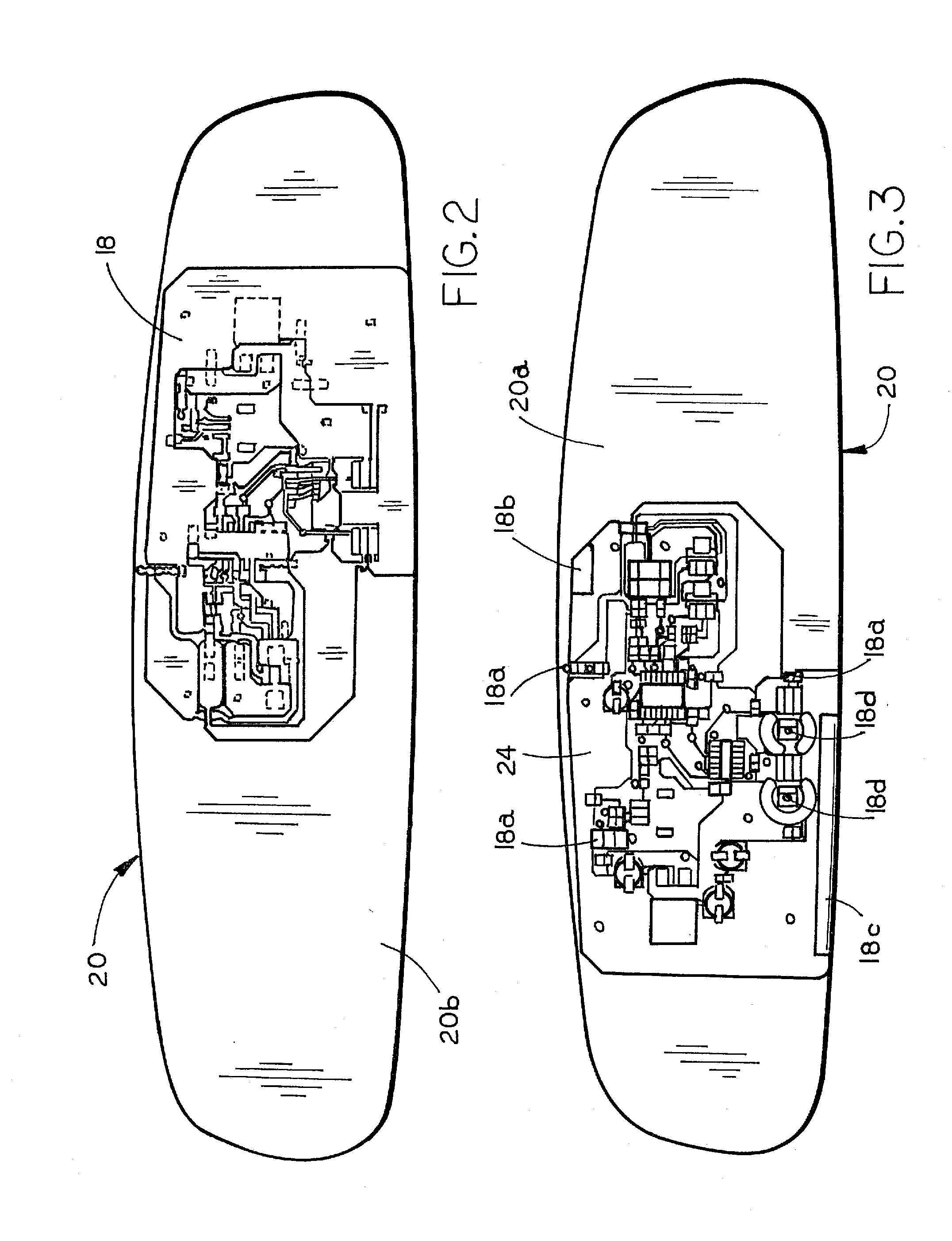Mirror reflective element assembly
a technology of mirror assembly and reflective element, which is applied in the direction of circuit optical details, instruments, transportation and packaging, etc., can solve the problems of adding to the size, weight and volume requirements, adding to the size and weight of the mirror assembly, and costing to manufacture and assemble, so as to improve the manufacturing and assembly process, the effect of low cost and convenient manufacturing
- Summary
- Abstract
- Description
- Claims
- Application Information
AI Technical Summary
Benefits of technology
Problems solved by technology
Method used
Image
Examples
Embodiment Construction
[0023]Referring now to the drawings and the illustrative embodiments depicted therein, an interior rearview mirror assembly 10 includes a casing 12, a bezel 13, a reflective element assembly or cell 14 and a mounting arrangement 16 (FIG. 1) for adjustably mounting the casing and reflective element 14 to an interior portion of a vehicle, such as to a mounting button or the like at an interior surface of a windshield of a vehicle. Mirror reflective element assembly 14 includes a conductive trace or layer or coating 18 (FIG. 2) applied to or disposed on or at the rearward surface (the surface facing forward or in the direction of travel of the vehicle when the mirror assembly is installed in the vehicle) of a reflective element substrate, such as the typically glass substrate of the reflective element assembly, such as on the rear surface 20a (FIGS. 3-6) of a second or rear substrate or glass element 20 of an electro-optic or electrochromic mirror cell (commonly referred to as the four...
PUM
| Property | Measurement | Unit |
|---|---|---|
| conductive | aaaaa | aaaaa |
| size | aaaaa | aaaaa |
| weight | aaaaa | aaaaa |
Abstract
Description
Claims
Application Information
 Login to View More
Login to View More - R&D
- Intellectual Property
- Life Sciences
- Materials
- Tech Scout
- Unparalleled Data Quality
- Higher Quality Content
- 60% Fewer Hallucinations
Browse by: Latest US Patents, China's latest patents, Technical Efficacy Thesaurus, Application Domain, Technology Topic, Popular Technical Reports.
© 2025 PatSnap. All rights reserved.Legal|Privacy policy|Modern Slavery Act Transparency Statement|Sitemap|About US| Contact US: help@patsnap.com



